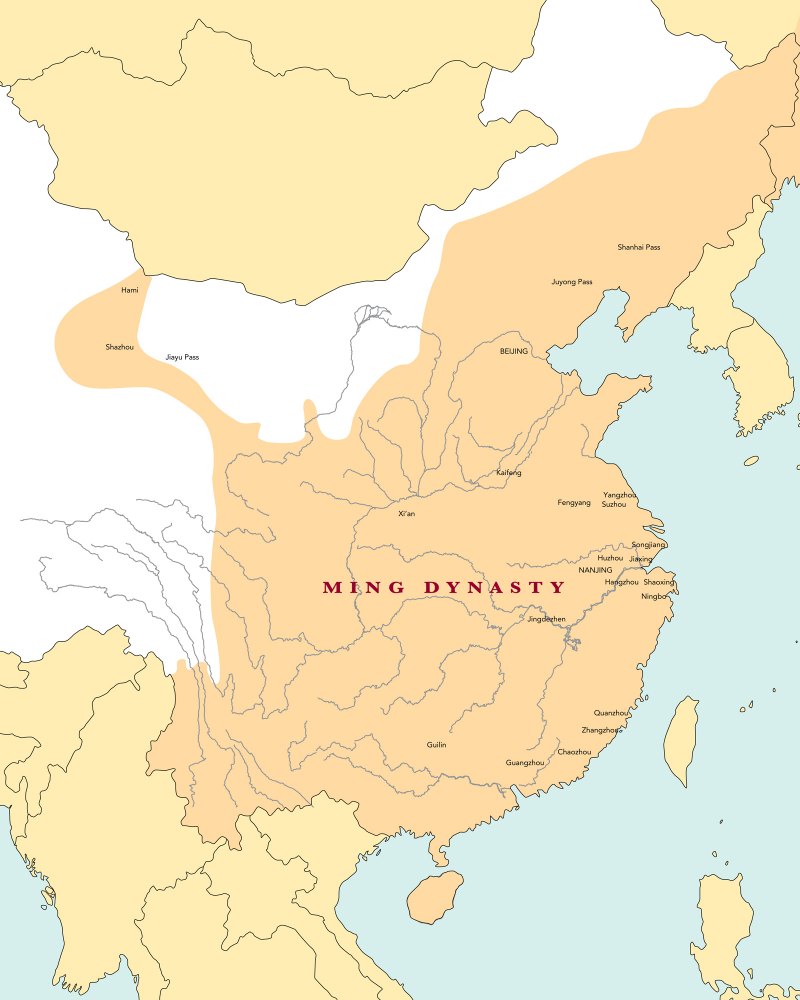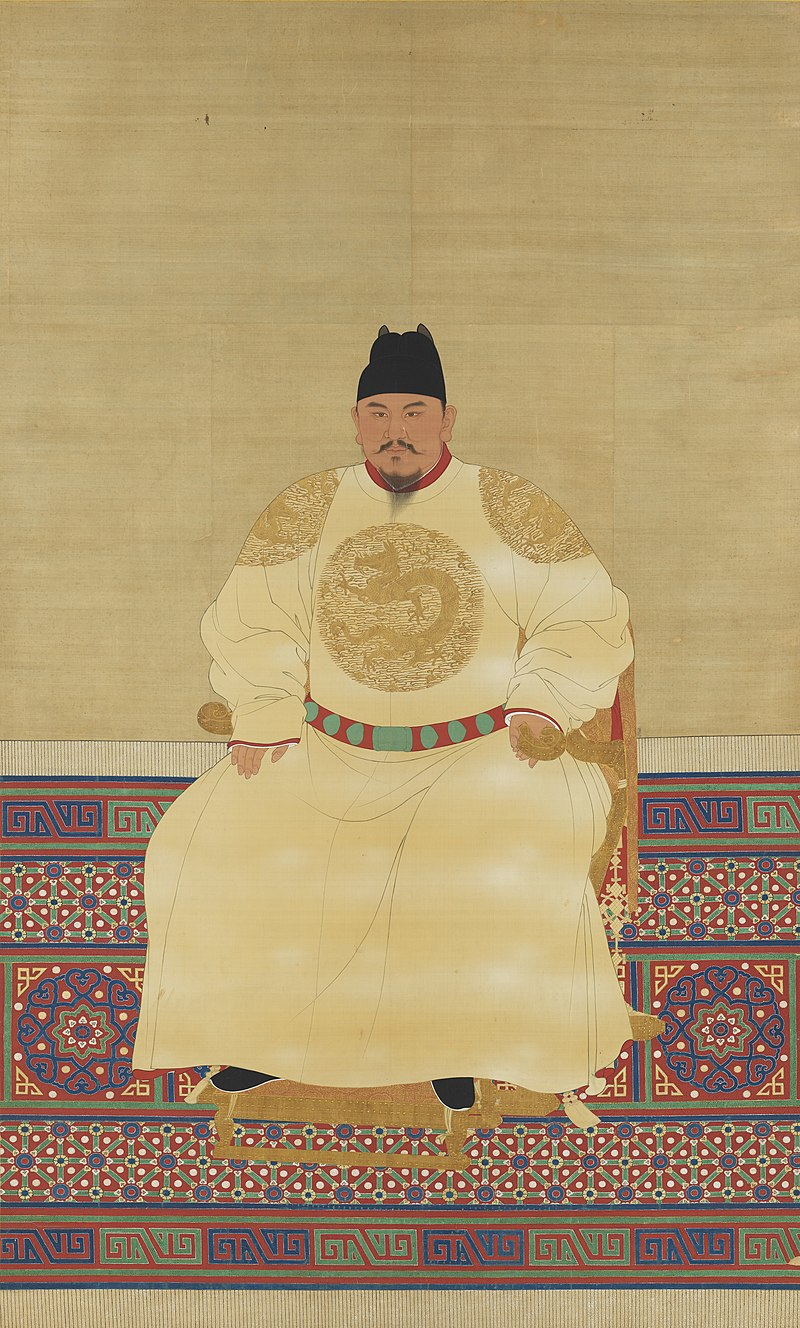The Ming Dynasty

After the Mongol Yuan dynasty was overthrown, the Ming Dynasty, sometimes referred to as the Great Ming, controlled China from 1368 to 1644. China's final traditional dynasty, the Ming, was controlled by the Han, the country's dominant ethnic group.
Emperor Taizu, also known as Zhu Yuanzhang, the founder of the Ming Dynasty, was born into poverty and spent some of his boyhood traveling the nation after his parents perished in a series of natural disasters along the Yellow River. He lived for a while as a beggar in a Buddhist monastery, but that existence came to an end when a militia set the monastery on fire to put down a revolt. Then, he joined a White Lotus Guild-affiliated rebel organization in AD 1352 and advanced quickly. Eventually, he led a successful assault on Nanjing, which he used as a base to fight the local warlords. In 1368, Zhu Yuanzhang overran Beijing, burned the palaces, forcing the Mongol emperors to flee, and founded the Ming Dynasty.
After taking power, Emperor Taizu worked to rebuild the infrastructure of the Ming Dynasty. Along with new palaces and administrative buildings, he also constructed a 48 km long wall surrounding Nanjing. According to Ming history, Emperor Taizu started creating a new Confucian code as early as 1364. It was finished in 1397 and reproduced some of the rules contained in the ancient Tang Dynasty Code 653.
Emperor Taizu designated Zhu Yunwen as his heir, and once Emperor Taizu passed away in 1398, he succeeded to the throne as Emperor Jianwen. The militarily powerful Zhu Di, son of Emperor Taizu, disagreed with this, though. He and Emperor Jianwen soon started to feud politically. To assassinate Jianwen and his courtiers, Zhu Di personally commanded the soldiers in the insurrection that destroyed the palace in Nanjing. Later, Zhu Di became the Yongle Emperor and rose to the throne. His reign is considered by scholars to be the second founding of the Ming Dynasty because he changed
many of his father's policies.
From 1405 through 1433, Emperor Yongle sent ships to India, the Persian Gulf, and the east coast of Africa as part of ambitious expeditions that sought to extend China's tribute system to neighboring nations. By 1557, the system of tribute had been supplanted by maritime trade, through which China traded silk and permitted the presence of Europeans within the empire. This was a time of gastronomic development when China first encountered delicacies like sweet potatoes and peanuts.
Porcelain was one of the most loved exports of the Ming Dynasty. They are made by crushing ceramics, combining them with ceramic clay, and baking the mixture until transparent. Although this method was created in the Tang Dynasty, it was improved during the Ming Dynasty. To create imperial porcelain, a factory was built in Jingdezhen in 1368. The Jingdezhen factory, for example, became a much-loved exporter of porcelain to Europe in hopes of multiplying expand this production model.
Regarding religion, Christian missionaries from Europe also started to arrive in China, giving the globe its first sight of daily life there. In 1583, Matteo Ricci, an Italian Jesuit priest, established the first Catholic mission in China. Chinese literature was translated into Latin by Ricci, who also studied the language and produced several books on it.
In terms of literature, China saw a publishing boom during the Ming Dynasty, with a vast variety of accessible publications produced for the general public. Reference books, training on religion and philosophy, Confucian literature, and instructions for formal admission tests were also distributed. Fiction has a big audience, particularly works that use informal language. The funny short stories by author Feng Menglong about ghosts and court characters were very well received by businesspeople and educated ladies. Period fiction started to become more popular during the Ming Dynasty. The most well-known books from the Ming Dynasty were often written by anonymous authors under fictitious names, as was the case with the sensual works Plum in a Golden Vase and Golden Lotus. During this time, illustrated books also thrived. For an image that is easily replicable, artists might carve their images onto wooden blocks for the printing process. Due to the repetition of text provided by publishers, one method a publisher differentiates their books from others is by using drawings.
The financial problems of the Ming were partly to blame for the dynasty's downfall. The continued expenditures on defense against insurgents, especially the Mongols, as well as military campaigns also began to significantly drain the empire's financial resources. The record-low temperatures of the Ice Age also caused an agricultural disaster, draining the royal coffers. Due to starvation, soldiers left their stations to join gangs that pillaged the countryside. Floods, locusts, droughts, and diseases are slowly ravaging the country. A group of rebels broke the dyke of the Yellow River in 1642, resulting in flooding that killed hundreds of thousands of people. In 1644, Chongzhen, the final Ming emperor, killed himself. Later that year, the semi-nomadic Manchus prevailed in the chaos and established the Qing Dynasty, marking the fall of the Ming Dynasty.
To conclude, the Ming Dynasty:
- controlled China from 1368 to 1644 with the first Emperor being Taizu.
- Emperor Taizu rebuilt the infrastructure with palaces and typically a new Confucian code as early as 1364.
- the Yongle Emperor witnessed the development of maritime trade through the silk trade, the development of cuisine, and porcelain production.
- Regarding religion, witnessing the arrival of Christian missionaries from Europe to China.
- the literary side witnessed a publishing boom with a lot of publications being produced for the public such as reference books, training in religion, and philosophy.
- financial problems were the cause of the downfall of the dynasty in 1644.











